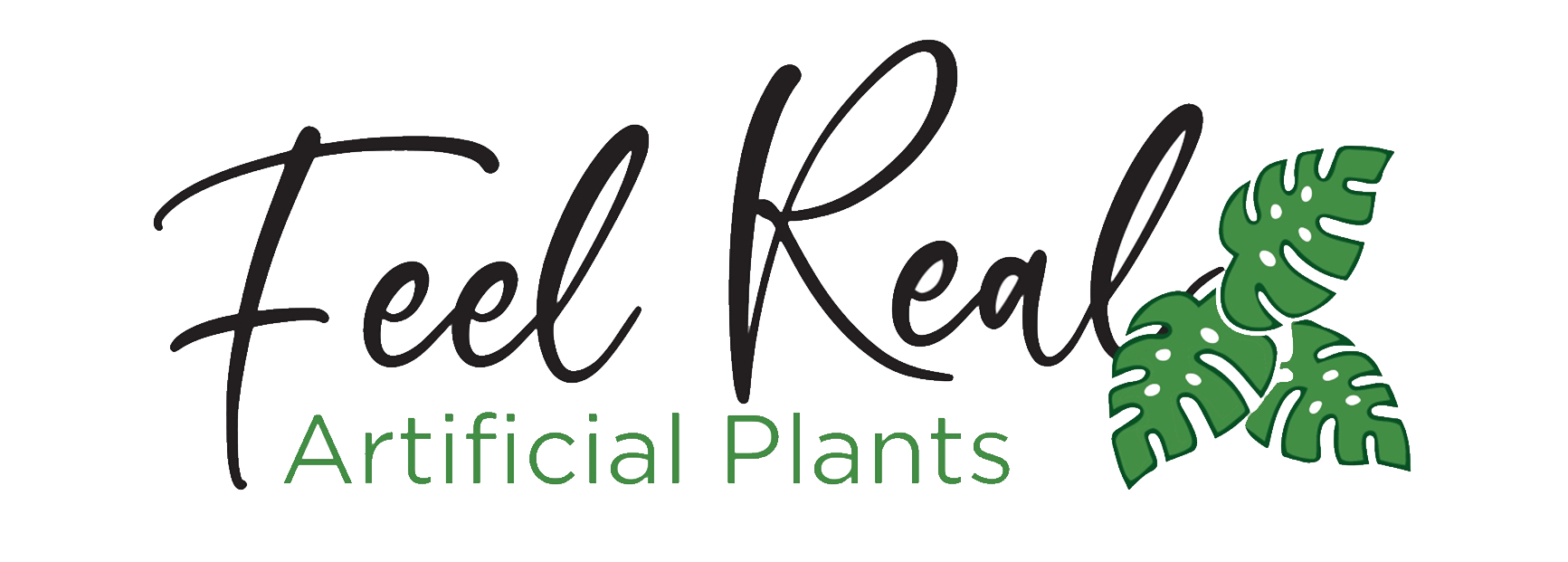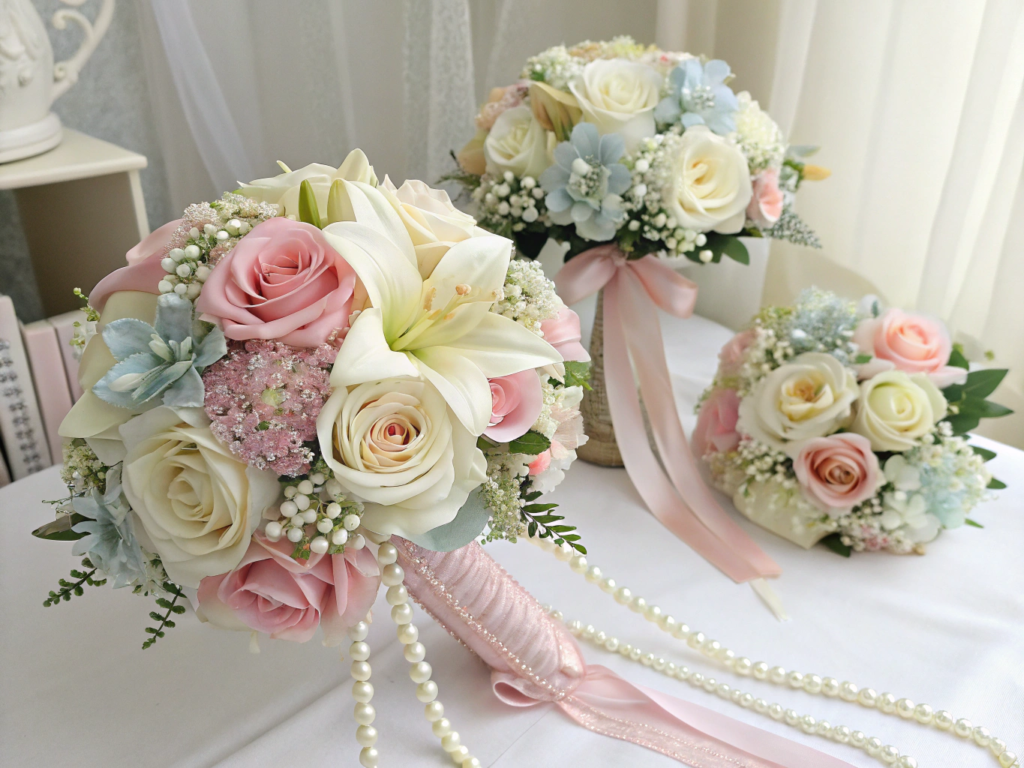Planning a wedding decor can be like a battle between wanting something beautiful, needing something affordable and dealing with the last minute details. Couples dream of the flawlessly pinned Pinterest flower and then worry about the budget and practicality of getting fresh flowers. Here, modern quality artificial flowers really come in handy.
Unlike the rigid, waxy imitation flowers of generations ago, today faux florals present an absolutely realistic option. They are durable, are near the natural flowers. And they will not wilt, bruise or cause allergies as fresh arrangements do.
As you read through this article, you are going to be taught about the most critical considerations to create artificial flower bouquets so real that the visitors will be unable to believe their eyes.
Are Fake Flowers Tacky for Wedding Decor?
The question of whether artificial flowers are ‘tacky’ is a long-standing debate in the wedding world, with top publications like The Knot weighing in on their modern appeal. When it comes to wedding decorations with artificial flowers, the distinction between lifelike elegance and a plastic, flat appearance can often be a matter of materials, design and detail.
Don’t go for cheap, sparkly artificial flowers and rather go for contemporary, imitation blooms, which are made with UV treated silk peonies or roses perfect for outdoor use.

You can blend with artificial greenery such as eucalyptus and ivy to give a natural depth, and anchor arches of ceremony or doorway wreaths so they do not reveal the plastic. Below are some handy hints to make the wedding decor look professional with faux flowers.
- Go with natural materials: Low-cost artificial flowers can have a distinctly artificial look with shiny spotless plastic petals, stiff forms, and dull, monolithic coloring. All these imperfections get highlighted even more with close-up wedding photography. To avoid this, good materials should be considered, e.g. silk, latex or premium polyethylene (PE). This will provide soft touch materials, realistic veining and natural color graduation, e.g. ombr or blush-tipped petals. These specifications assist light to interact with the petals in the manner that is most similar to real flowers, so your compositions can be beautiful in real life as well as in photos.
- Combine artificial flowers with natural touches: Arguably the simplest thing you can do to make artificial flowers look more realistic is to add natural accents to the composition. Having some texturizing elements such as eucalyptus, pampas grass, lavender sprigs, or ornamental branches also interrupts the monotony and makes it three-dimensional. These natural details also serve to conceal any minor flaws in artificial florals so that the whole piece feels more complete, layered, and natural, as a fresh garden bouquet would be.
- Conceal mechanics to achieve a clean finish: Regardless of how beautiful the flowers may be, the arrangement can be spoiled by the fact that people can see the plastic stems, floral foam or wired supports. To keep the impression of natural growth, mask the structural elements with fuller flowers, e.g. hydrangeas, dahlias, or peonies. When applying floral foam, cover it with greenery before fitting flowers, such that you do not leave any holes visible, exposing the mechanics. In cascading displays, leave vines and leaves to hang freely over edges, to mellow out the lines of the display.
- Select wedding materials according to the wedding setting: Artificial flowers have different behavior in different settings and conditions. When it comes to outside weddings, it is best to use UV treated artificial flowers in order to avoid discoloring and damage due to the weather, particularly in sunny spots or windy places. In the case of indoor exhibits such as chandeliers, hanging arrangements, or wall backdrop, use of lightweight, pliable stems with option to secure without installing additional hardware. Blending with the environment will also be of assistance in making sure that your arrangement is also beautiful and complete when the event occurs.
- See how your plans work under real conditions: Wedding decorations can appear quite different under different lighting conditions, what is lovely in daylight can have a drab or unnaturally shiny appearance under evening spotlights or candlelight. Before you make your final choices, make sure that you see your flowers in the same light you will have at your event. Matte-finished petals are more likely to reflect light in a softer manner, which causes less glare and makes the petals look richer and more natural. This step can also assist you in visualizing how the arrangements will look as photographs so that they appear as magical in your wedding album as they do in reality.
The Cost of Artificial Wedding Flowers
Whether to have artificial or fresh flowers in your wedding usually boils down to the issue of affordability, beauty and long run value. It is also useful when you intend to split the numbers into small manageable brackets, particularly when you wish to create a visual impact on a small budget.
The prices are not standard within suppliers, regions and levels of quality, though the guide below is useful as a practical baseline against which to compare the prices of different types.
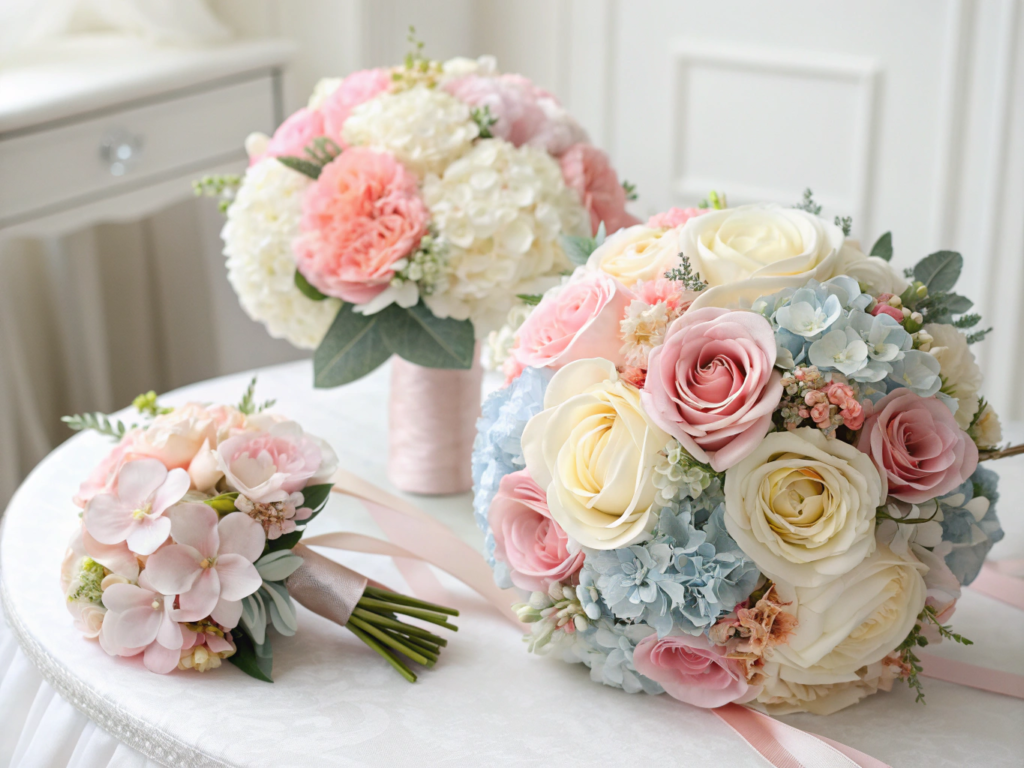
- Quality silk flowers: Silk flowers start at about 3 to 10 dollars a stem, and are the gold standard of realism, with soft-touch petals, layered veining and drape. High-quality flowers, such as peonies, orchid, or garden roses, usually have a hand-painted finish to add more depth. They are most effective in high-profile setups, like bridal bouquets, ceremony arches, and sweetheart tables, and bulkier items can be padded out with less expensive faux greenery as budgets allow.
- UV treated PE or PU flowers: These polyethylene or polyurethane flowers cost about 2 to 6 dollars a stem and are highly durable, flexible and are made to withstand intense sunlight during an outdoor wedding. They will not fade during the day even in outdoor spaces, and are perfect as altar decor, an aisle decoration, or a reception table centerpiece that is in direct sunlight.
- Latex-coated flowers: These flowers usually cost 4–8 dollars per stem and are made to look like actual petals with the same translucent effect and feel of the soft petals. They are particularly persuasive when it comes to lilies, tulips and tropical flowers. Combining latex choices with silk or PE types provides texture and contrast to arrangements and keeps costs in check.
- Foam flowers: Foam flowers are inexpensive, lightweight and priced at between one and three dollars per stem, which makes them ideal when creating large scale decor like hanging installations, aisle runners or stage backdrops. They retain their form and are simple to arrange, and thus an economical option in designs that guests will see at a distance.
- Artificial plants and fillers: Fake eucalyptus, ruscus, ferns and pampas grass are typically priced at $1 -$3 per stem or spray and add a lot of volume, texture, and depth without increasing costs dramatically. Quality greenery can be reused as ceremony garlands, table runners, and accent foliage can be used again as decoration in your home after the wedding.
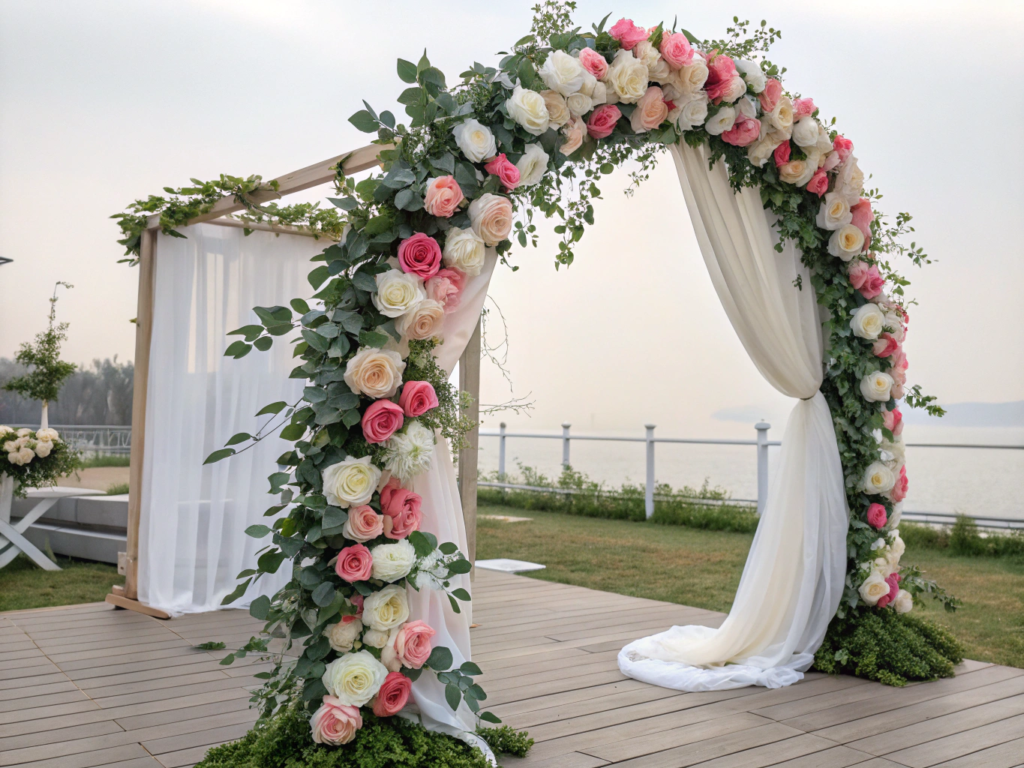
Quality of the Artificial Flowers for Wedding
Fake flowers are very easy to lose their appeal when they are created using cheap materials. They can also be faded by sunlight, have stiff textures, and the wiring can be exposed by poor construction. To make arrangements fresh, natural, and long-lasting, do not use glossy polyester or hard synthetics which crack in the elements. Here is how to make confident, lasting decisions to overcome the frustration, and achieve high value.
- Material guide: Choose materials that will match your aesthetic, as well as, functional requirements. To give an example, PE (polyethylene) provides soft-touch petals with integrated UV-protection, so it is suitable to be used in outdoor exhibition, where the display is exposed to direct sunlight. Using silk, you can have a natural drape and life-like motion that suits fine indoor designs or bouquets you will carry and demonstrate close up. Avoid very thin, brittle, plastics and untreated fabrics that will discolor and crack very easily even in outdoor conditions.
- Quality tests: Bend stems prior to purchase, to make sure they bend, not snap, which would indicate good internal wiring. Gently touch the petals and feel the texture of the petals with your fingertips. Quality artificial flowers should have a supple, realistic touch, rather than a stiff, plastic feel. In arrangements that are wider or taller, the weighted bases will serve to keep the arrangements upright in a windy or heavy traffic area, so you will have nothing to worry about, and with less to take care of in the long run.
- Supplier vetting: Just stick with the suppliers who can provide you with some documented testing of UV and fade resistance to prove durability. Always ask to see samples prior to ordering in bulk quantity so you can view color vibrancy, texture and construction to verify that the end product is what you expect it to be.
Worried about outdoor fading and weather damage? At FeelReal, the solution is UV-treated PE, a material factually engineered to last. Need absolute realism for close-ups like bouquets? We recommend hand-painted silk for its unmatched detail. Frustrated by stems that break during arrangement? Our factory standard is a flexible wire core that bends without snapping. These material and construction choices are our direct solutions to guarantee quality for your projects.
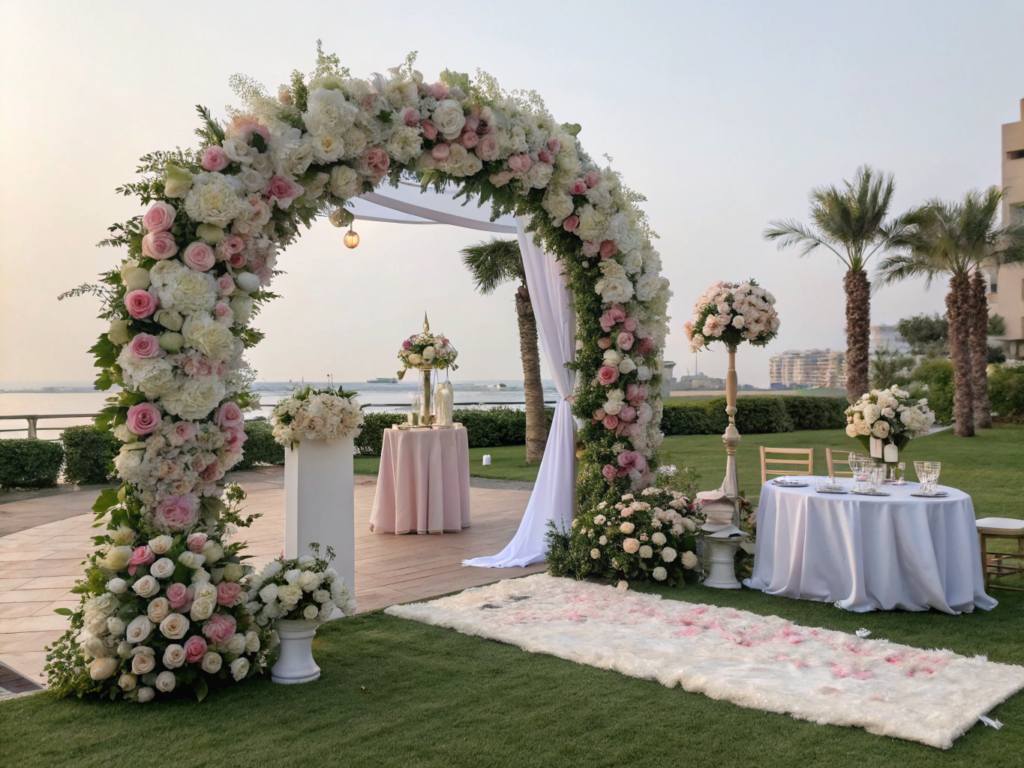
Choosing the Right Faux Blooms for a Wedding
Expanding on the concept of developing a visually cohesive wedding theme, the following are the best choices of a harmonious design, with flowers to assist one in getting coordination issues out of the way:
- Peonies: The layered petals are thick and soft, which makes it work in rustic, modern and vintage decor. They are an excellent choice when you would want uniformity in a number of arrangements.
- Hydrangeas: These big, round flowers fill any space with ease and conceal mechanics, like floral foam or wire, so the overall effect is a smooth finish that does not require additional filler.
- Orchids: The long, elegant stems automatically provide height and drama, which assists you to balance arrangements with odd table levels or empty areas.
If you’re wondering where to start, we can share what we’ve learned from years of collaborating with top wedding designers. Peonies are beloved for their ability to fit nearly any theme, from rustic to romantic. Hydrangeas are the classic choice when you need to create an atmosphere of abundance and timeless elegance. Meanwhile, Orchids are the clear favorite for modern weddings, adding instant drama and a touch of the exotic. Matching the flower’s inherent style to your theme is the simplest way to ensure a beautiful result.
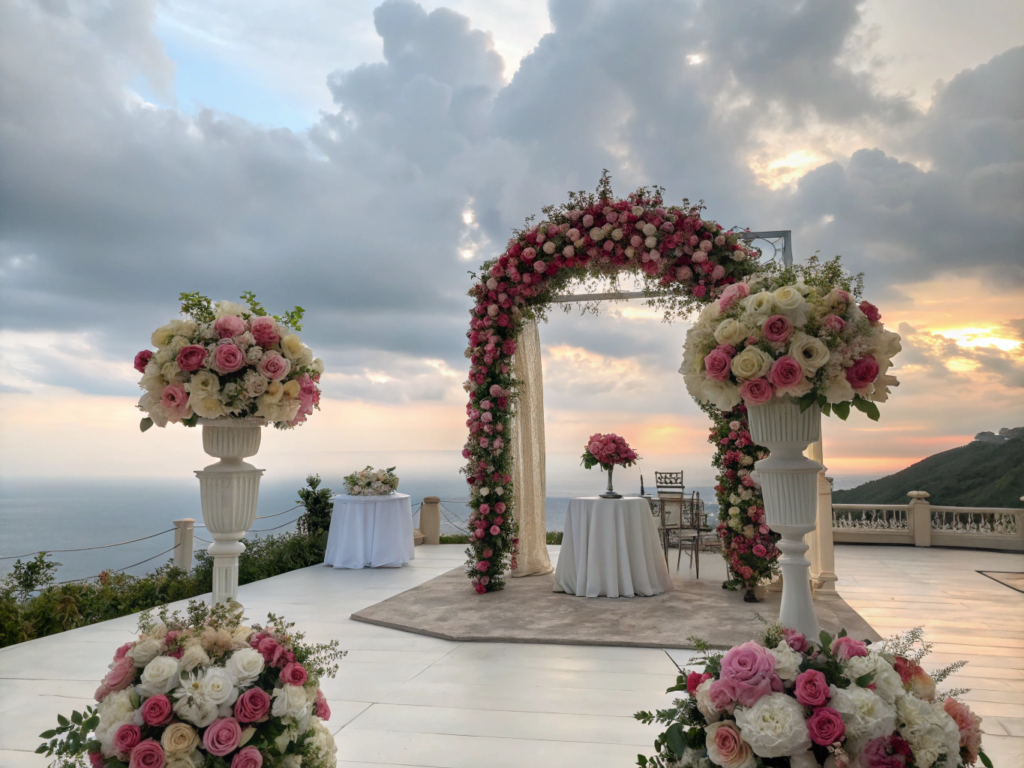
Style Wedding Bouquets with Artificial Flowers
Making your own wedding bouquet using artificial flowers is both economical and a very personal thing to do. However, to get a natural and beautiful appearance, it is good to be attentive to details. Once you have arranged, put your bouquet in a matching vase to play with proportions until the big day. These are some useful tips that will guide you on how to eliminate the most common design errors to make your bouquet look great both physically and on photographs:
- Make your stems more flexible: PE stems are very stiff when you first take them out of the package, and this may make your artificial floral arrangement look unnatural. Most artificial flowers feature flexible wire stems that allow for easy hand-shaping to create natural-looking curves and movement. Simply run your fingers along the stems to eliminate any creases, then gently bend them into organic curves that replicate the graceful flow of real blooms.
- Place focal points to the plan: Start with 3-5 focal blooms, i.e. rose, peony or hydrangea and place them in various levels and directions. After you have your focal flowers set, fill in the gaps slowly with smaller elements of baby breath, lavender sprigs or eucalyptus. This is layering, which adds depth, dimension and a professional well-balanced appearance.
- Ratio and dimension: A bouquet that is either too small or too large will look ridiculous in a photo. Tie your stems in ribbon to have a finished feel to the grip, and then use a little hot glue to make sure the arrangement will stay together when held and transported. This enables ratios to be streamline and portable during the day.
- Pay attention to the arrangement of the flowers: Apply small and subtle gaps between the flowers and create an impression of new flowers. Overcrowding does not only make the arrangement look fake but also makes it heavier than it should be. Equal spacing makes the arrangement light, airy and easy to carry.
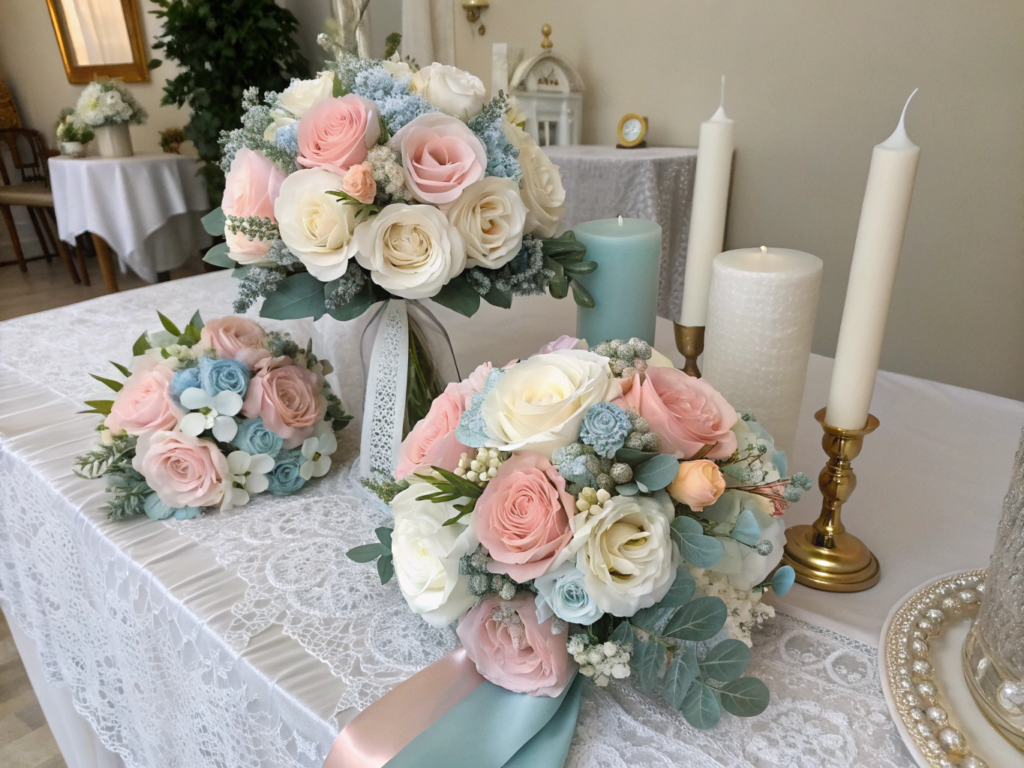
Conclusion:
You can create crafty as well as long-lasting wedding decorations with the help of artificial flowers. As opposed to fresh flowers, which fade or lose petals, high-quality UV-resistant PE and deluxe silk types remain bright in the initial photo to the final dance. They are ideal in hot summer days, in sunlit ceremonies, or in long receptions, and they can withstand handling and movement, but keep all bouquets, centerpieces and floral installations impeccable.
In addition to durability, they provide all the colors, textures and styles available all year round with no seasonal constraints. With this liberty, exotic color schemes, unusual associations and faux flowers in foliage, stripes or material can be used to add dimension. To achieve a smooth finish, test setups on your venue lighting so that the hues and other aspects look fantastic in both real life and video.
FAQs about Artificial Flowers for Wedding
1. Are artificial flowers actually cheaper than real ones?
Not always stem-for-stem, but they often provide better overall value. The initial investment of premium artificial flowers can be high. But the savings will come from buying any flower you want without seasonal price hikes, preparing everything far in advance to save on labor costs, and the ability to reuse or resell them after the wedding. This allows you to achieve a luxurious look while giving you greater control over your budget.
2. Can I mix artificial flowers with real flowers?
Absolutely! In fact, it’s a popular technique used by professional wedding designers to get a high-end look. By blending high-quality artificial focal blooms (like peonies or roses) with real, inexpensive greenery and filler flowers, you get the best of both worlds: the flawless look of the main flowers and the natural texture and fragrance of real foliage, making the entire arrangement incredibly lifelike.
3. Can artificial flowers survive outdoor weddings?
Yes, they are an excellent choice for outdoor weddings, provided you select the right materials. Look for flowers made from UV-treated materials like PE (polyethylene), as they are specifically engineered to resist fading from direct sunlight and are durable enough to withstand elements like wind. This ensures your ceremony arches, aisle decor, and centerpieces will remain vibrant and picture-perfect throughout your entire event, regardless of the weather.
